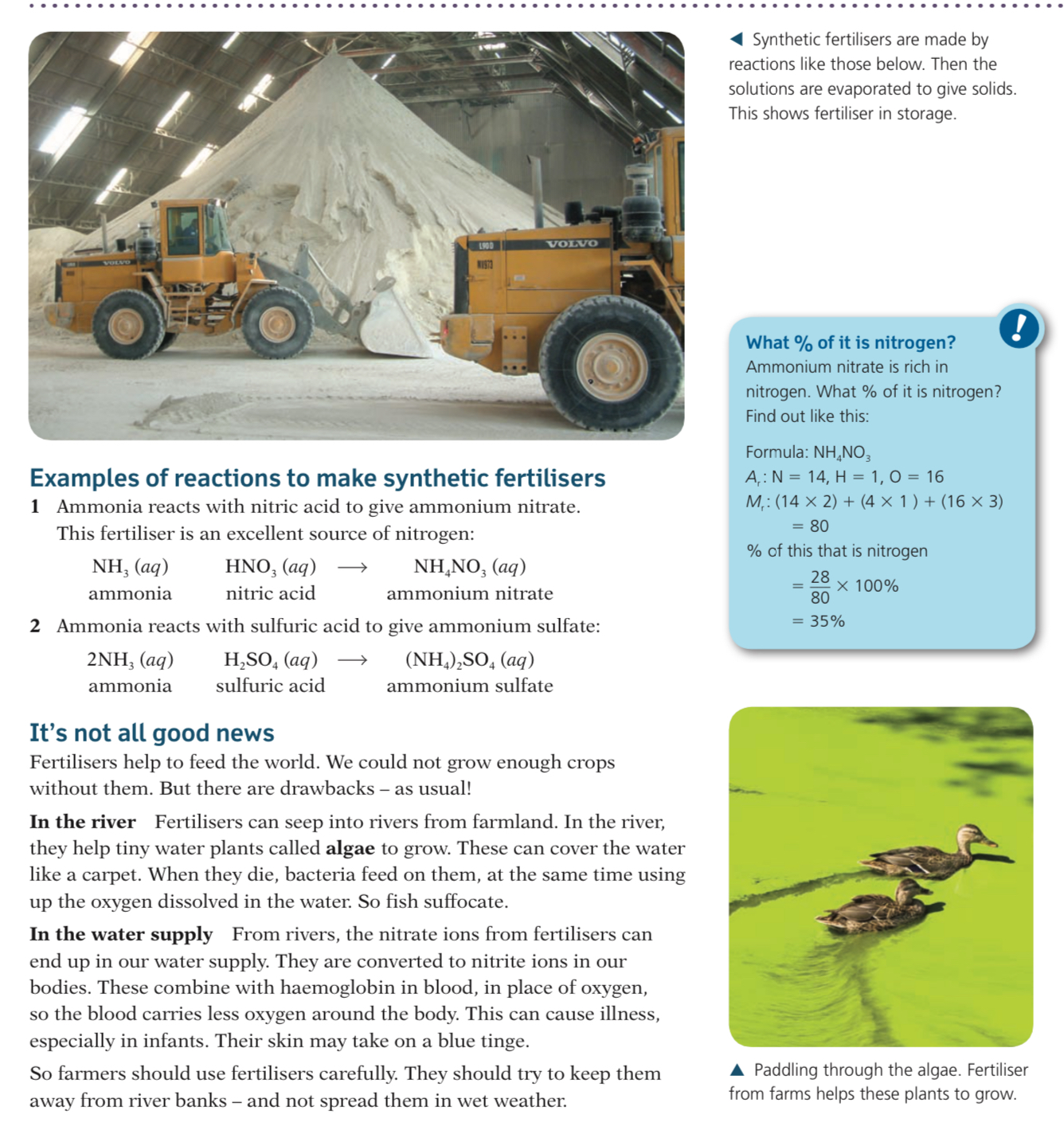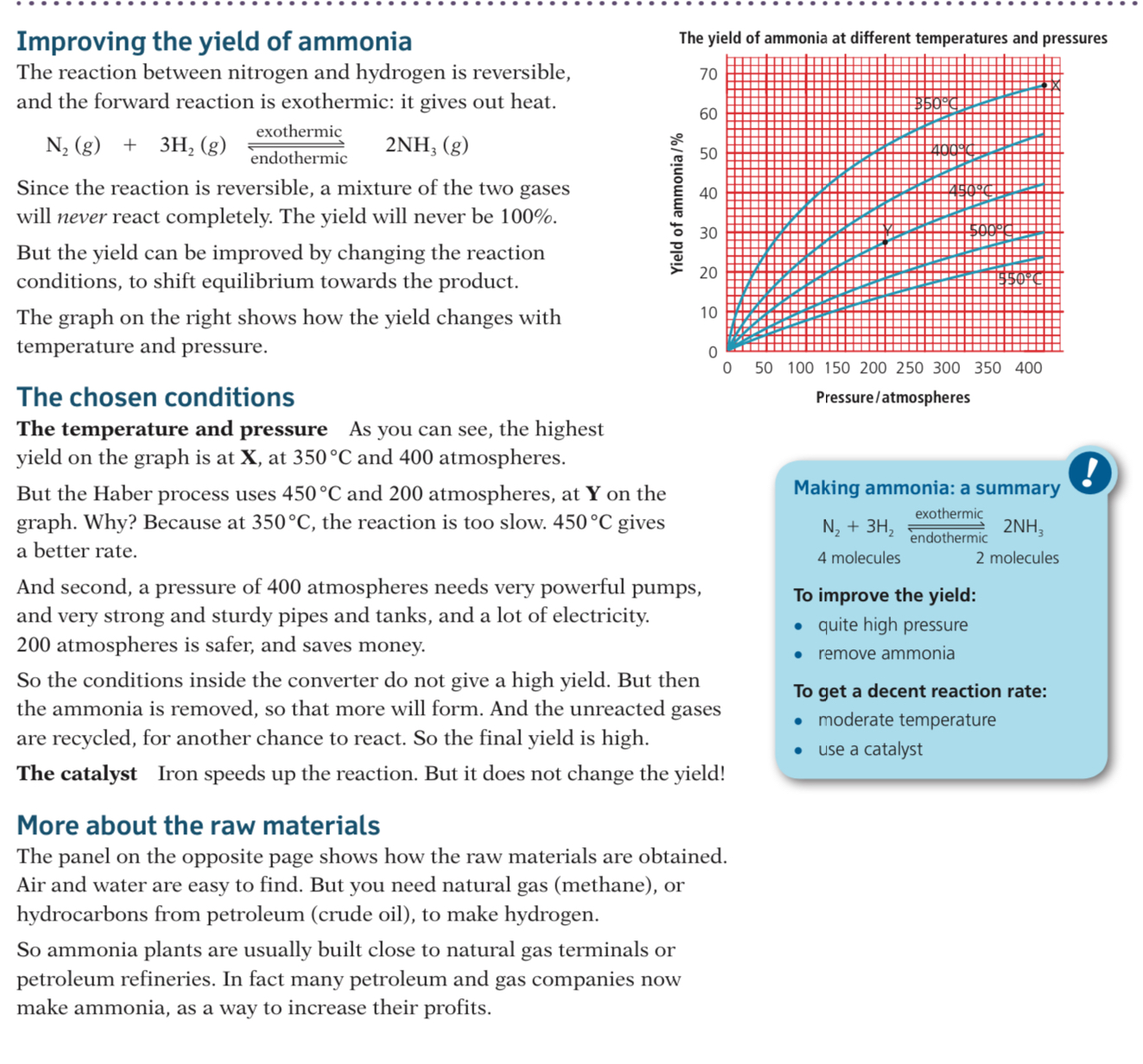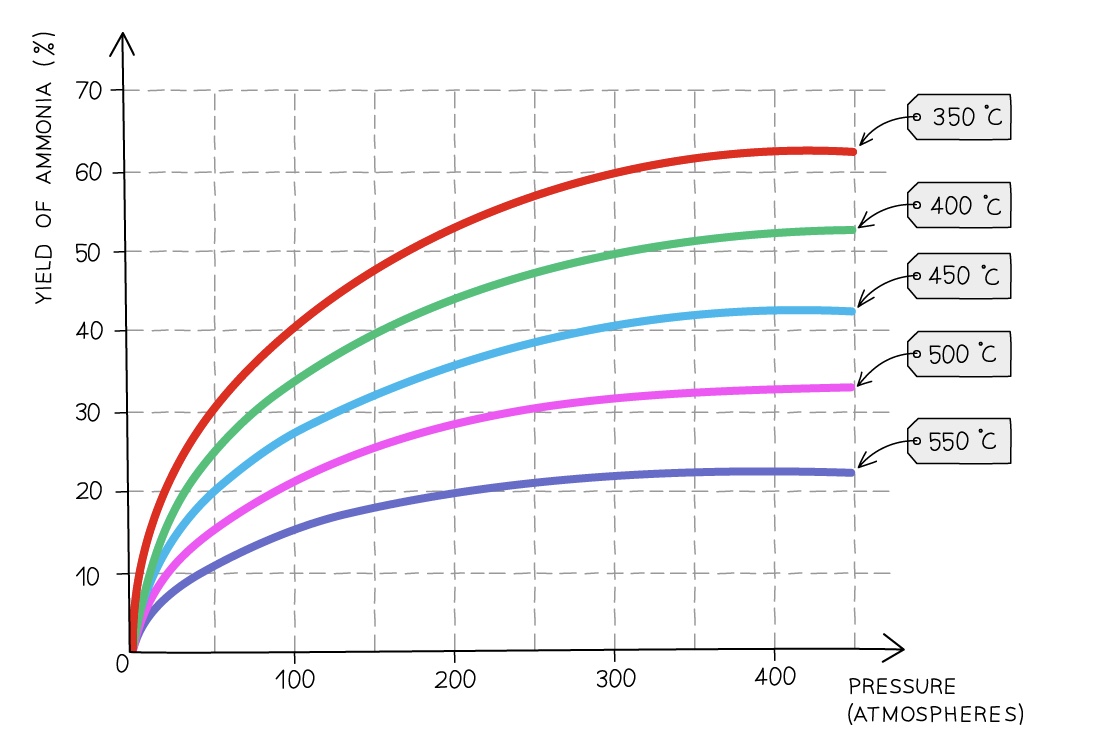14 Nitrogen & Fertilizers
Fertilizers and Ammonia
N, K, P fertilizers
Fertilisers contain nitrogen, potassium and phosphorus
Nitrogen makes chlorophyll and protein and promotes healthy leaves
Potassium promotes growth and healthy fruit and flowers
Phosphorus promotes healthy roots
Fertiliser compounds contain the following water-soluble ions:
Ammonium ions, NH4+ and nitrate ions, NO3-, are sources of soluble nitrogen
Phosphate ions, PO43- are a source of soluble phosphorus
Most common potassium compounds dissolve in water to produce potassium ions, K+
Common fertiliser compounds include:
Ammonium nitrate, NH4NO3
Ammonium phosphate, (NH4)3PO4
Potassium sulfate, K2SO4
Different fertilisers contain different amounts of fertiliser compounds so each contain different proportions of nitrogen, potassium and phosphorous


Displacement of Ammonia
Ammonia can be displaced from its salts by the addition of an alkali substance
Farmers regularly add basic substances such as calciumhydroxide to their soil to neutralise any excess soil acidity
If too much of the basic substance is added or if it has been added too soon after fertiliser has been added, then an ammonia displacement reaction may occur
This involves the loss of nitrogen from the fertiliser, nullifying its effectiveness as a fertiliser
For example, the salt ammonium chloride is used extensively in fertilisers and reacts with calcium hydroxide:
2NH4Cl + Ca(OH)2 → CaCl2 + 2NH3 + 2H2O
Manufacture of Ammonia
Ammonia is manufactured using The Haber process which occurs in five stages:
Stage 1: H2 and N2 are obtained from natural gas and the air respectively and are pumped into the compressor through pipe
Stage 2: The gases are compressed to about 200 atmospheres inside the compressor
Stage 3: The pressurised gases are pumped into a tank containing layers of catalytic iron beds at a temperature of 450 °C. Some of the hydrogen and nitrogen react to form ammonia:
N2 (g) + 3H2 (g) ⇌ 2NH3 (g)
Stage 4: Unreacted H2 and N2 and the product ammonia pass into a cooling tank. The ammonia is liquefied and removed to pressurised storage vessels
Stage 5: The unreacted H2 and N2 gases are recycled back into the system and start over again


Conditions
As the reaction is reversible and the forward reaction is exothermic, the amount of ammonia produced (the yield) can be favoured by altering the conditions
Temperature: 450 ºC
A higher temperature would favour the reverse reaction as it is endothermic (takes in heat) so a higher yield of reactants would be made
If a lower temperature is used it favours the forward reaction as it is exothermic (releases heat) so a higher yield of products will be made
However at a lower temperature the rate of reaction is very slow
So 450 ºC is a compromise temperature between having a lower yield of products but being made more quickly
Pressure: 200 atm
A lower pressure would favour the reverse reaction as the system will try to increase the pressure by creating more molecules (4 molecules of gaseous reactants) so a higher yield of reactants will be made
A higher pressure would favour the forward reaction as it will try to decrease the pressure by creating less molecules (2 molecules of gaseous products) so a higher yield of products will be made
However high pressures can be dangerous and very expensive equipment is needed
So 200 atm is a compromise pressure between a lower yield of products being made safely and economically
Catalyst: Iron
The iron catalyst does not increase the yield of ammonia produced but it does increase the rate of reaction, meaning that more ammonia can be made in a given time

 Knowt
Knowt
